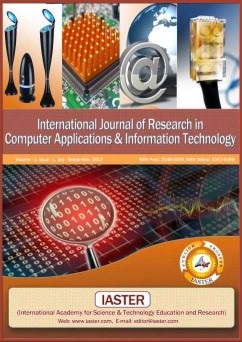CLOUDS OF REASON: AN EMPIRICAL STUDY OF GOVERNANCE, PRIVACY, AND PREDICTIVE INTELLIGENCE
Keywords:
Cloud Computing, Cloud Governance, Data Privacy, Digital India, CybersecurityAbstract
Cloud computing has transformed the digital infrastructure across both public and private sectors by providing scalable, adaptable, and cost-efficient IT solutions. However, the swift expansion of cloud services has brought about intricate governance issues related to data privacy, compliance, and cybersecurity. This research critically evaluates the dual nature of cloud governance—whether it serves as a benefit or a drawback—in the current global and Indian landscapes. Utilizing financial and operational data from 2019 to 2024 across five leading economies, this study investigates trends in cloud expenditure, cost efficiencies, market shares of providers, and governance strategies. Particular attention is given to India's changing regulatory environment following implementing the Digital Personal Data Protection Act (2023) and its effects on national data sovereignty and digital governance. Additionally, the research delves into the influence of major cloud providers, the emergence of new job roles, and the strategic significance of cloud governance for future governmental applications. The analysis indicates that with effective governance frameworks in place, cloud adoption can significantly improve efficiency and security. The study concludes with policy suggestions, a roadmap for future research, and insights into career opportunities in cloud governance for Indian software developers. This paper serves as a thorough resource for policymakers, researchers, and IT strategists as they navigate the complexities of cloud adoption in the digital age.
References
Marston, S., Li, Z., Bandyopadhyay, S., Zhang, J., & Ghalsasi, A. (2011). Cloud computing—The business perspective. Decision Support Systems, 51(1), 176–189.
Zhang, Q., Cheng, L., & Boutaba, R. (2010). Cloud computing: state-of-the-art and research challenges. Journal of Internet Services and Applications, 1, 7–18.
ENISA. (2022). Cloud Security Guide for SMEs. European Union Agency for Cybersecurity.
Gartner. (2024). Forecast Analysis: Public Cloud Services. https://www.gartner.com
IDC India. (2024). Cloud Market Analysis Report. https://www.idc.com
NIST. (2020). Framework for Improving Critical Infrastructure Cybersecurity.
Gupta, A., & Dhillon, G. (2021). Cloud Governance: Addressing Security Risks in Digital Enterprises. Journal of Information Systems Security, 17(4), 200–215.
European Commission. (2023). Gaia-X: A Federated Data Infrastructure. https://ec.europa.eu
Ministry of Electronics and IT. (2023). Digital Personal Data Protection Act. Government of India.
Statista. (2024). Global Cloud Spending and Forecast. https://www.statista.com
Government of India. (2024). MeghRaj Cloud Initiative. Ministry of Electronics and Information Technology.
NASSCOM. (2024). India Cloud Talent Demand Report. https://www.nasscom.in

